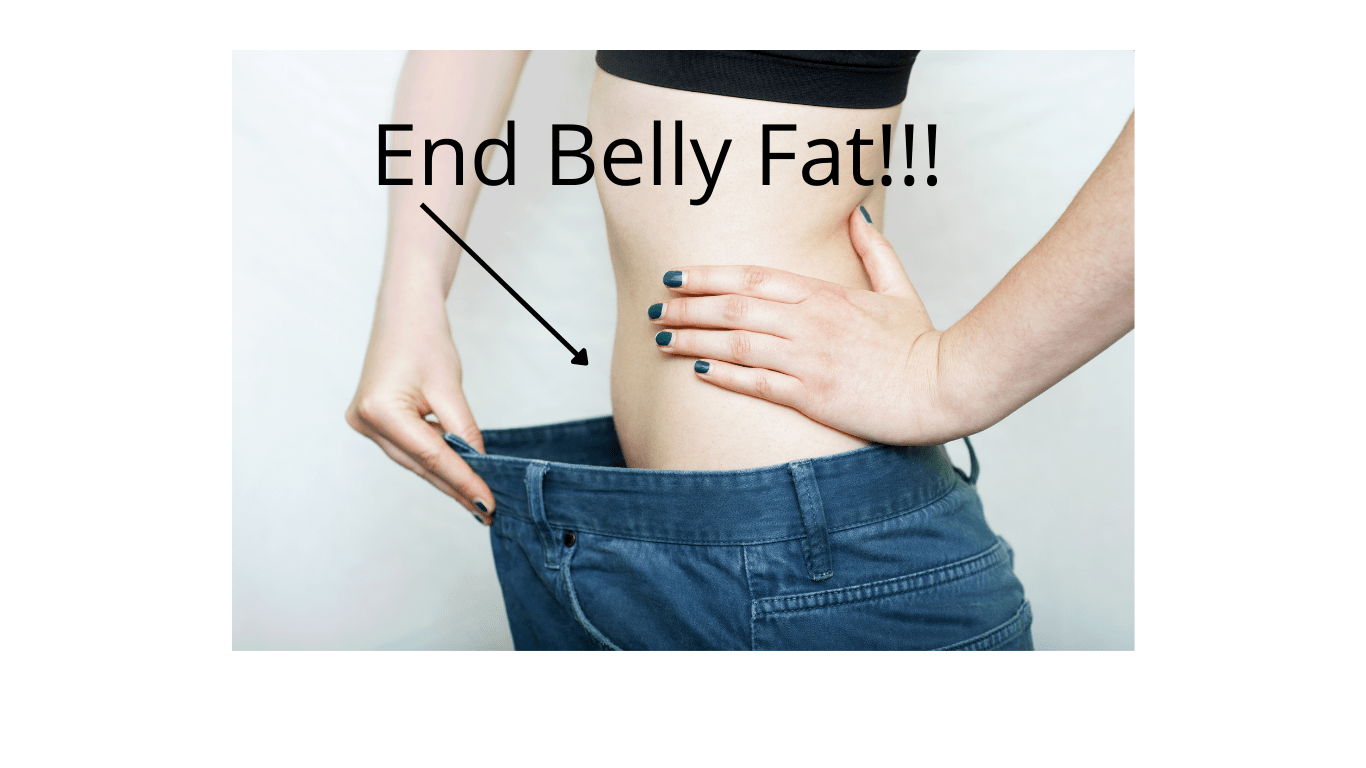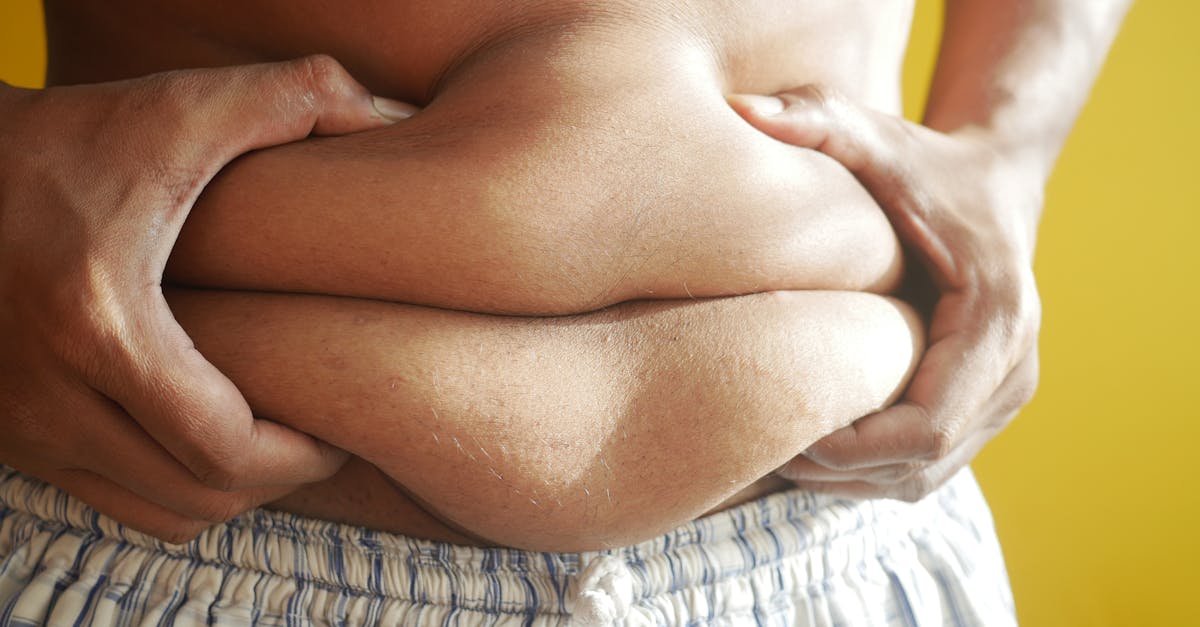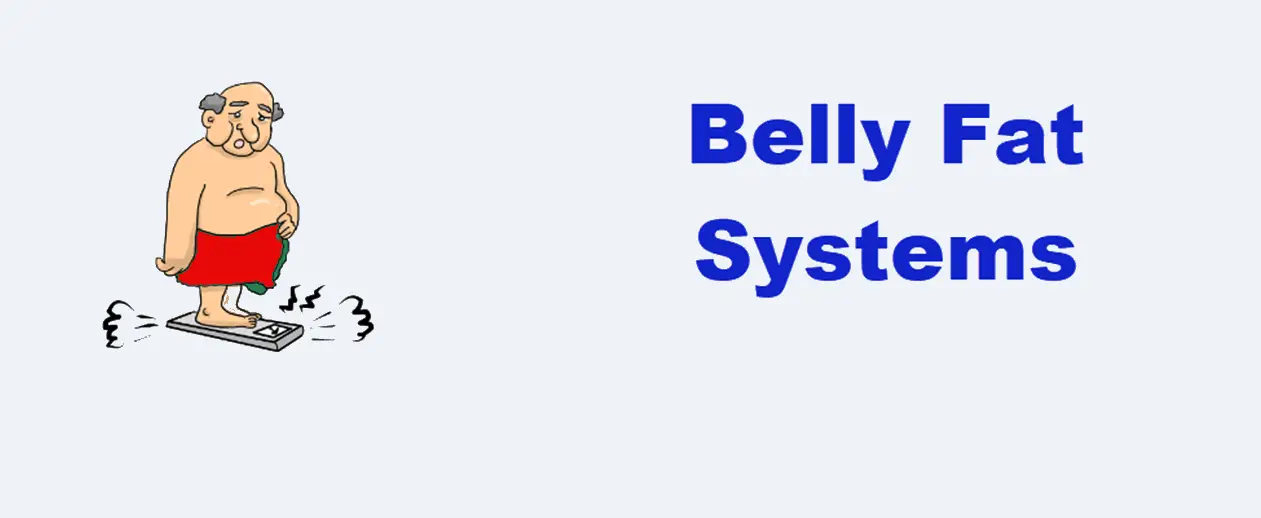Belly Fat…Let’s Talk About It.

Belly Fat: What You Need to Know and What You Can Do
Belly fat is a common issue among many people worldwide, and it is something that we all dread. Having excess belly fat not only affects our confidence and appearance but also poses a serious risk to our health. The accumulation of visceral fat around the midsection has been linked to a range of health issues, including diabetes, cardiovascular disease, and hypertension.
If you are struggling with belly fat and want to learn more about what you can do to combat it, you have come to the right place. In this article, we will discuss everything you need to know about belly fat: what it is, why it’s harmful, and what you can do to reduce it. By the end of this article, you will have actionable steps that you can take towards achieving a healthier body.
What is Visceral Fat?
Belly fat, also known as visceral fat, is a type of body fat that is stored deep within the abdominal cavity. Unlike subcutaneous fat – the type of body fat that accumulates just under the skin – visceral fat wraps around internal organs like the liver, pancreas and intestines.
Visceral fat isn’t just about appearance; it’s a serious health concern. This type of body fat has been linked to increased risk for a variety of health problems including heart disease, stroke, type 2 diabetes and certain types of cancer.
Visceral fat produces hormones and other substances that can cause inflammation in the body. This inflammation has been linked to insulin resistance – a condition where cells in the body don’t respond properly to insulin and can’t use glucose effectively for energy.
Understanding Metabolism
Metabolism is the process by which your body converts food into energy. It is a complex process that involves the breakdown of molecules to provide fuel for all cellular processes in your body. Genetics, age, gender, and lifestyle factors such as diet and exercise all play a role in determining metabolic rate.
Basal Metabolic Rate (BMR)
The basal metabolic rate (BMR) is the number of calories needed to maintain basic bodily functions like breathing, circulation, and digestion while at rest. BMR accounts for approximately 60-70% of total daily energy expenditure. It varies from person to person depending on factors such as body composition, sex, age, and overall health.
Eating below your BMR can slow down your metabolism and make it harder to lose weight. This happens because when you consume fewer calories than your body needs to function properly, it goes into “starvation mode” which slows down its metabolism in an effort to conserve energy.
Thermic Effect of Food (TEF)
The thermic effect of food (TEF) refers to the number of calories burned during the digestion, absorption, and processing of food. It accounts for approximately 10% of total daily energy expenditure. TEF varies depending on what you eat – protein has a higher TEF compared to carbohydrates or fats.
To boost your metabolism through TEF alone is not practical but consuming high-protein foods can help increase muscle mass which in turn increases metabolism by increasing BMR rates. Small meals more frequently throughout the day also increases TEF moderately over time.
 The Relationship Between Waistline and Health
The Relationship Between Waistline and Health
Did you know that the size of your waistline can be an indicator of your overall health? Studies have shown that carrying excess weight around the midsection, specifically visceral fat, can increase the risk of developing chronic diseases such as type 2 diabetes, heart disease, and certain cancers.
Visceral fat is different from subcutaneous fat, which is found just underneath the skin and can be pinched or measured with calipers. Visceral fat surrounds organs in the abdominal cavity and is metabolically active, producing hormones and inflammatory substances that contribute to insulin resistance. As a result, individuals with too much visceral fat are at greater risk of developing metabolic syndrome.
Measuring your waist circumference can give you an idea of how much visceral fat you may be carrying. In general, women with a waist circumference over 35 inches and men with a waist circumference over 40 inches are considered to have an increased risk for health problems related to excess abdominal fat.
 How Exercise Affects Belly Fat
How Exercise Affects Belly Fat
Physical activity is one of the most effective ways to burn belly fat. When you exercise, your body burns calories, and if you maintain a calorie deficit, your body will start to use stored fat for energy. Regular exercise can also boost your metabolism, making it easier for you to lose weight and keep it off.
Aerobic exercises like running or cycling are particularly effective at reducing belly fat because they increase heart rate and calorie burn. These types of exercises also help decrease insulin resistance and inflammation levels in the body, both of which are linked to belly fat. Strength training exercises like weightlifting can also be beneficial because they build muscle mass that helps increase metabolism rates even when the body is at rest.
To get the most benefits from exercise for reducing belly fat, experts recommend doing 30 minutes of moderate-intensity aerobic activity at least five days per week. If time is an issue or you’re new to exercising, start with shorter workouts and gradually increase the duration as you build more endurance. Aim for a mix of aerobic and strength-training exercises throughout the week.
Targeting Abdominal Fat: What You Can Do
Eat a Healthy Diet
The foods you eat play an important role in your body weight and the amount of belly fat you carry. To target abdominal fat, you need to consume a healthy diet that is low in calories and high in nutrients. Incorporate fiber-rich fruits and vegetables, lean protein sources such as chicken or fish, and whole grains into your meals to keep you full for longer periods. Additionally, avoid processed foods, sugary drinks, and refined carbs found in white bread, pasta, or rice as they can contribute to belly fat.
One way to eat healthily is by using portion control. Keep track of the amount of food on your plate by using smaller plates or bowls when eating meals. This helps reduce the number of calories consumed during mealtime.
Increase Physical Activity
Exercising regularly is one of the most effective ways to reduce abdominal fat. Engage in moderate-intensity aerobic exercise for at least 30 minutes per day. Activities like brisk walking or cycling can help burn calories while increasing heart rate.
You can also try strength training exercises that target the abdominal muscles for better results. Strength training helps build muscle mass which increases metabolism thereby burning more calories even while at rest.
Reduce Stress Levels
Stress can cause an increase in cortisol levels which contributes to belly fat accumulation over time. To combat stress-related belly fat effectively, indulge in activities such as yoga or meditation that promote relaxation and stress reduction techniques.
You should also ensure that you get enough sleep each night as lack of sleep can increase cortisol levels which can lead to increased appetite and unhealthy food choices.
In conclusion, targeting abdominal fat requires lifestyle changes that involve consuming a healthy diet, increasing physical activity, and reducing stress levels. Making these changes is not always easy, but the rewards are worth it. By ditching unhealthy foods and incorporating healthier options into your diet, engaging in regular exercise, and managing stress levels through relaxation techniques and adequate sleep, you can reduce your belly fat and improve your overall health.
Making Lifestyle Changes for a Healthier You
When it comes to reducing belly fat, lifestyle changes can make a significant difference. It’s important to note that making small, gradual changes is more sustainable than drastic measures that are difficult to maintain. Here are some lifestyle changes you can make for a healthier belly:
Eat More Fiber
Fiber is an essential nutrient that plays an important role in digestion and weight management. It helps keep you feeling full longer and reduces the likelihood of overeating. Eating fiber-rich foods like fruits, vegetables, whole grains, and legumes can help reduce belly fat. An easy way to increase your fiber intake is by adding chia seeds or flaxseeds to your meals.
Avoid Processed Foods
Processed foods are high in calories, unhealthy fats, and sugars that contribute to weight gain and belly fat. Instead of relying on processed snacks or meals when you’re hungry or pressed for time, try meal prepping healthy snacks like sliced veggies with hummus or Greek yogurt with berries. By avoiding processed foods, you’ll lower your calorie intake and reduce belly fat.
Reduce Alcohol Intake
Alcohol can be a significant contributor to excess belly fat as it’s high in calories and sugar. Try limiting your alcohol intake or switching to low-calorie options like wine spritzers instead of cocktails or beer. Reducing alcohol consumption will not only help reduce belly fat but also improve overall health.
Making lifestyle changes takes time and effort but the results are worth it when it comes to reducing belly fat. Remember that every small change counts towards achieving a healthier you!
 Meal Planning for a Healthier Belly
Meal Planning for a Healthier Belly
Eating Habits that Promote a Healthier Belly
Our abdominal area is particularly susceptible to weight gain, and diet plays an essential role in reducing belly fat. The key to meal planning for a healthier belly is to reduce your total calorie intake and avoid processed foods. Starchy carbohydrates like pasta, bread, and rice should also be limited in your diet. Instead, opt for whole grains such as quinoa, brown rice, and bulgur. When it comes to protein intake, it’s imperative to choose lean meats like chicken breasts or fish instead of fatty cuts of meat like beef or pork. Legumes like lentils and beans can serve as excellent sources of protein while also providing plenty of fiber.
The Importance of Fiber in Your Diet
Fiber plays an integral role in promoting digestive health while reducing the risk of various health conditions such as diabetes, cardiovascular disease, and even cancer. It’s important to consume both soluble and insoluble fibers that can help regulate blood sugar levels while promoting feelings of fullness. Foods rich in soluble fiber include oats, barley, legumes (peas, lentils), fruits (apples), vegetables (carrots), nuts/seeds (chia seeds). Foods rich in insoluble fiber include vegetables (broccoli/cauliflower), zucchini/squash/eggplant/cucumber skins/seeds/nuts & seeds (sunflower/pumpkin seeds). Aim for at least 30 grams of dietary fiber per day from foods or supplements.
The Role of Probiotics in Your Diet
Probiotics are healthy bacteria that live within our gut microbiome that help maintain healthy digestion while promoting immune function. Consuming probiotics has been shown to reduce inflammation linked to metabolic disorders such as obesity. Foods rich in probiotics include yogurt, kefir, kimchi, sauerkraut, and kombucha. It’s also important to incorporate prebiotic foods into your diet like garlic, onion, leeks, asparagus, and bananas that promote the growth of healthy gut bacteria. By planning your meals with a focus on nutrient-dense whole foods such as fruits, vegetables, lean proteins, legumes and whole grains while reducing processed and high-calorie foods like sugary drinks or unhealthy snacks you can achieve a healthier belly.
The Role of Stress on Belly Fat
Stress is an inevitable part of life. However, chronic stress can have a detrimental effect on our health and can even lead to the accumulation of belly fat. When we experience stress, our body releases cortisol, a hormone that prepares us for the “fight or flight” response. If cortisol levels remain high for prolonged periods, it can cause an increase in appetite and cravings for comfort foods that are high in sugar and fat.
Additionally, cortisol promotes the storage of abdominal fat by increasing insulin resistance in fat cells. High levels of insulin contribute to the accumulation of visceral fat around organs like the liver and pancreas. Chronic exposure to cortisol can also lead to inflammation throughout the body, which has been linked to numerous health problems such as diabetes and heart disease.
To reduce stress-related belly fat, incorporating relaxation techniques such as yoga or meditation into your daily routine is highly recommended. Deep breathing exercises have also been shown to decrease cortisol levels in the body. It’s important to prioritize self-care activities that promote relaxation and reduce stress levels.
 The Power of Sleep
The Power of Sleep
The Connection Between Sleep and Belly Fat
Did you know that getting a good night’s sleep could play a crucial role in battling belly fat? Studies have shown that people who get less than 6 hours of sleep per night tend to have higher levels of abdominal fat. This is because lack of sleep can lead to an increase in the stress hormone cortisol, which is known to promote fat storage in the abdomen. Additionally, sleep deprivation can cause hormonal imbalances that stimulate hunger and cravings for sugary or fatty foods.
How Much Sleep Do You Need?
The amount of sleep needed varies by person, but most adults require between 7-9 hours per night. It’s important to establish consistent sleeping habits by going to bed at the same time each night and waking up at the same time each morning. This will help regulate your body’s internal clock and promote better quality sleep.
Tips for Better Sleep Habits
If you struggle with getting enough quality sleep, there are several simple lifestyle changes you can make. Reduce caffeine intake later in the day and limit alcohol consumption before bedtime. Keep your bedroom cool, quiet, and dark to promote relaxation. Establishing a regular bedtime routine can also be helpful – take a warm bath or read a book before bed to signal your body it’s time for rest.
Developing a Positive Mindset
Your mindset can greatly affect your ability to achieve your goals, and losing belly fat is no exception. A positive attitude can help you stay motivated, make healthier choices, and overcome obstacles.
One effective way to develop a positive mindset is through affirmations. These are positive statements that you repeat to yourself throughout the day. For example, “I am capable of reaching my weight loss goals” or “Every day, I am making progress towards a healthier body.” By repeating these affirmations regularly, you can gradually shift your mindset from one of doubt and negativity to one of confidence and optimism.
You can also cultivate a positive mindset by setting realistic goals for yourself. Instead of focusing solely on losing belly fat, set smaller goals that are achievable in the short term. For example, aim to exercise for 30 minutes every day or incorporate more vegetables into your diet. Celebrate each small success along the way; this will help keep you motivated and optimistic about achieving your bigger goals.
Conclusion
In conclusion, reducing belly fat is not just about achieving a desirable appearance, but it’s about improving your overall health. The accumulation of excess visceral fat can lead to serious and life-threatening conditions such as heart disease, type 2 diabetes, and even cancer. By taking proactive steps such as incorporating regular exercise and sleep into your routine, managing stress levels, adopting a healthy diet, and developing a positive mindset, you can reduce belly fat in a healthy way. With diligence and persistence towards these lifestyle changes, not only will you see physical improvements in your waistline but also significant benefits for your well-being that will allow for a happier and healthier future.

